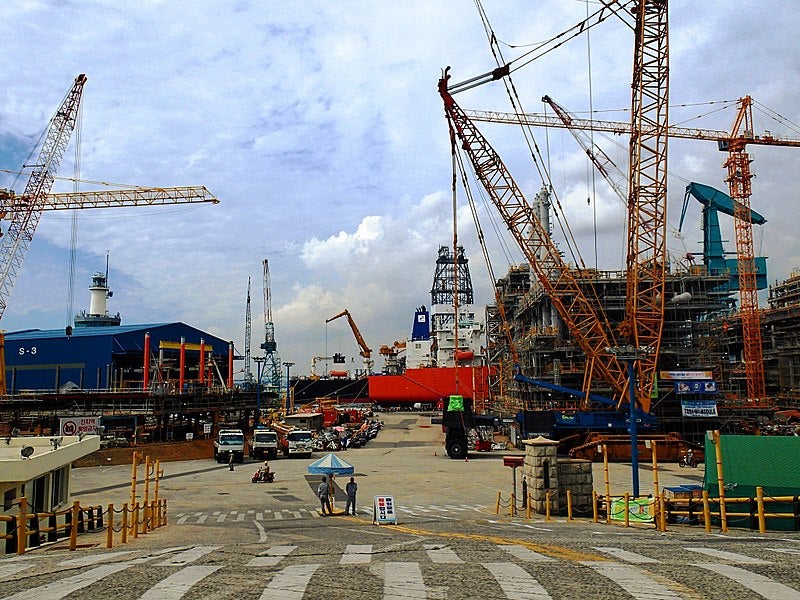
South Korean shipbuilder Hyundai Heavy Industries (HHI) has announced that it has completed the construction of the first liquefied natural gas (LNG)-powered very large container vessel in the world.
Hyundai Samho Heavy Industries, one of its shipyard units, will deliver the 14,800 twenty-foot equivalent unit (TEU) ship to Eastern Pacific Shipping of Singapore.
The vessel is 366m long and 51m wide and features a 12,000m3 fuel tank that will enable a round trip between Europe and Asia on a single filling.
The ship is made of 9% nickel steel, which allows it to sustain the toughness even at extremely low temperatures.
In 2018, Eastern Pacific Shipping awarded an order to Hyundai Samho for the delivery of six ships. The order is expected to be completed by the third quarter of 2022.
LNG-powered vessels are increasing in demand due to environmental regulations.
How well do you really know your competitors?
Access the most comprehensive Company Profiles on the market, powered by GlobalData. Save hours of research. Gain competitive edge.

Thank you!
Your download email will arrive shortly
Not ready to buy yet? Download a free sample
We are confident about the unique quality of our Company Profiles. However, we want you to make the most beneficial decision for your business, so we offer a free sample that you can download by submitting the below form
By GlobalDataLast week, Saudi Arabia-based shipping and logistics company Bahri signed an agreement worth $410m with Hyundai Mipo Dockyard for the construction of ten medium-range (MR) chemical tankers.
In January, probunkers signed a letter of intent (LOI) with Hyundai Mipo Dockyard for the construction of two LNG bunker vessels.
According to the agreement, the South Korean shipyard will construct two 7,600m3 LNG bunker vessels.
Last year, Hyundai Heavy Industries won a $390m contract from the European shipping company to build two large LNG carriers.
In 2018, Hyundai Samho Heavy Industries signed a $370m contract with Greece-based Consolidated Marine Management (CMM) for the construction of two LNG carriers.



